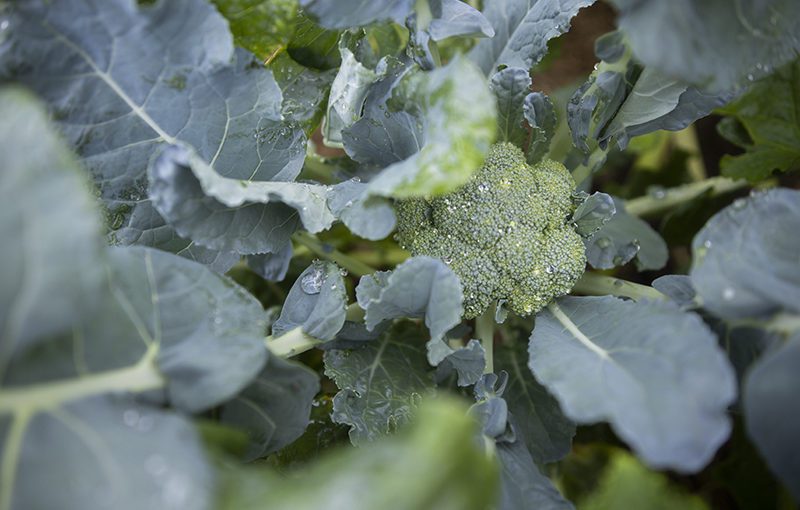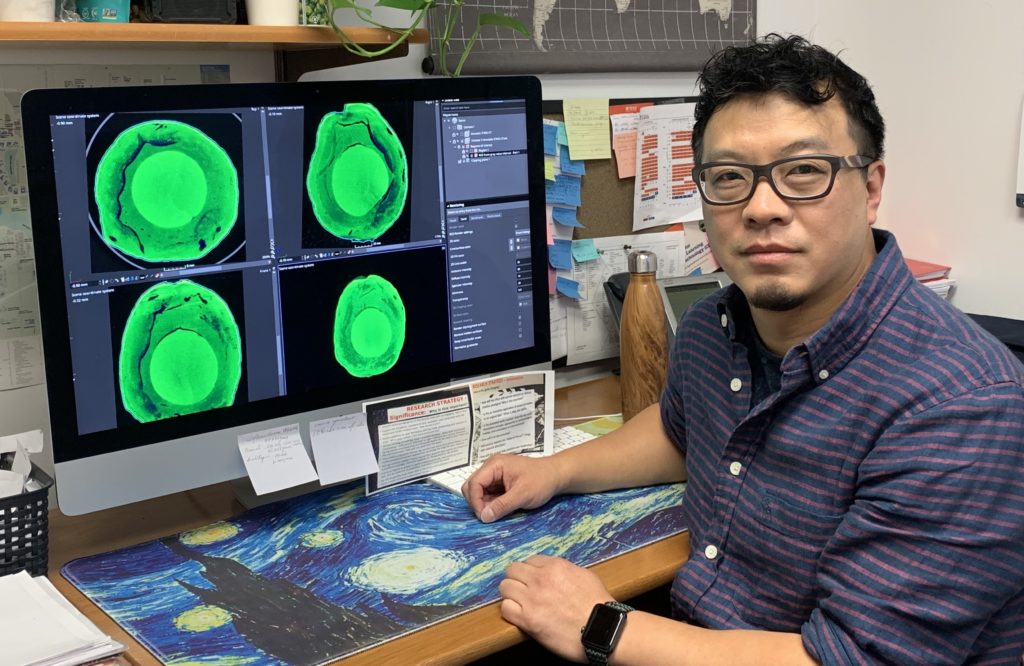May 10, 2021How University of Florida scientists are using AI to cut food waste, loss
If you have ever brought home seemingly fresh produce from the grocery store only to find it wilted and moldering a few days later, Tie Liu feels your pain.
“Everybody has this problem: Which of these vegetables or fruits should I use first? Guess wrong, and you end up throwing out the food,” said Liu, a postharvest researcher and assistant professor in the UF/IFAS horticultural sciences department.
Consumers are not the only ones who have this problem, Liu added.
“If you are transporting food from the farm to retailer, knowing the freshness of the produce can help you better plan ahead and maximize the freshness of the product,” Liu said. “But right now, there is no quick, easy way to know how long, for example, a head of broccoli has until it’s no longer fresh.”
As soon as something is harvested, a series of chemical changes begin inside the fruit or vegetable, and the produce starts to degrade. Scientists call this process “senescence.”
That broccoli might look fine to the human eye, but inside, the clock is ticking. That is why Liuis investigating whether it is possible to develop a hand-held or wearable device that can look beyond the visual spectrum to determine freshness.


“If successful, this device will tell you how fresh produce is and help food transporters andpacking houses better time shipments, increasing efficiency and providing fresher food for the consumer. Think of it like facial recognition, but instead of identifying faces, the device would identify freshness level” Liu said.
Funded by a nearly half-million dollar, four-year grant from the USDA National Institute of Food and Agriculture’s (NIFA) Agriculture and Food Research Initiative (AFRI), the project, called FreshID, also tackles a global problem: food waste and loss.
“About 40% of food produced is wasted. A significant proportion of that waste and loss occurs between the time the produce is harvested and when it gets to the consumer. The FreshID project aims to help make sure that food gets to the consumer at the right time,” Liu said.
The project, led by Liu , includes researchers in the UF Herbert Wertheim College of Engineering. The team will combine their expertise in plant molecular biology, hyperspectral imaging, computed tomography (CT) imaging and artificial intelligence (AI).
“Ultimately, we want to understand how physiological, biochemical and molecular changes going on inside produce can be detected using X-ray CT imaging and a hyperspectral camera, which is a camera that can see the whole spectrum of light, not just the blue, green and red pixels of a normal camera. We would then use that data to train a computer, using machine learning, to recognize the visual signals that indicate freshness levels,” Liu said.
“I am excited to be working with Dr. Liu and bringing our two areas of study together,” said Alina Zare, co-principal investigator on the grant. Zare is a professor in the department of electrical and computer engineering, where she leads the Machine Learning and Sensing Lab.
“My lab focuses on developing new machine learning and AI approaches that help solve real world problems. This is just another example of how tightly integrated interdisciplinary teams can make a meaningful impact on how we do research. This impacts not only in AI research but also research in the domain application such as, in this case, horticulture,” Zare said.
With the help of Zare’s lab, Liu will conduct experiments with heads of broccoli, avocadoes, strawberries and potatoes. However, he hopes these experiments provide insights that can be applied to many different kinds of crops.
“We are starting with fruits and vegetables, but our research aims to have broader impacts for agriculture and the reduction of food waste,” Liu said.
Photo at top: Liu tie looking at X-ray CT imaging of an avocado. Photo: Adrian Berry















